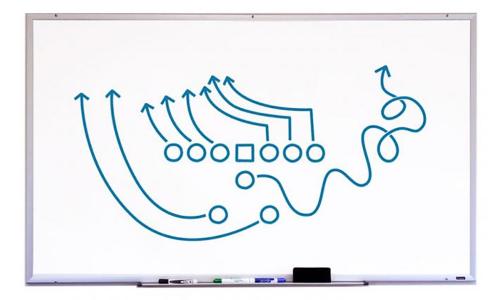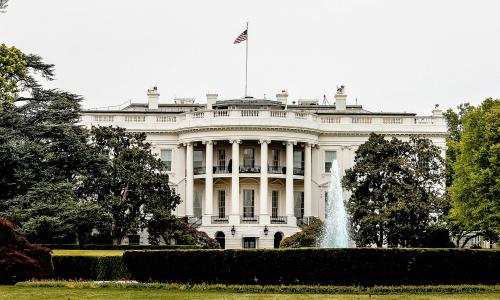Rather than honestly deal with its burgeoning concussion problem, the National Football League went after the reputation of the first doctor to link the sport to the degenerative brain disease he named Chronic Traumatic Encephalopathy.
What Happened
Four weeks into the 2002 pro-football season, the soon-to-be biggest problem for the National Football League was standing in a Pittsburgh autopsy room, looking down at the body of one of the most fearsome men to have ever played offensive lineman. As that future problem—Dr. Bennet Omalu, a Nigerian-born forensic pathologist tasked with that day’s routine autopsies—stared at the battered body of “Iron Mike” Webster, he made what would turn out to be a fateful decision: he asked his assistant to preserve the brain for future study.
What Omalu found in Webster’s brain—chronic traumatic encephalopathy (CTE), a progressive degenerative disease mainly associated with “punch drunk” boxers and victims of brain trauma—broke the NFL’s burgeoning concussion problem wide open. But instead of working with scientists and doctors to better understand the damaging effect of repeated concussions and how the league could improve the game to reduce head injuries, the NFL went after the reputation of Omalu and the other scientists who subsequently worked on CTE.
The NFL was no rookie at the Disinformation Playbook by the time Omalu published his initial paper on Webster in 2005. High-profile concussion-related retirements and injuries in the early 1990s had prompted reluctant NFL Commissioner Paul Tagliabue to create the NFL-run Mild Traumatic Brain Injury Committee (MTBI). Beginning in 2003, MTBI published research in the journal Neurosurgery (whose editor-in-chief consulted for the New York Giants) that heavily downplayed the breadth and severity of concussions.
As reporters Mark Fainaru-Wada and Steve Fainaru note in their book League of Denial, “The league used that journal, which some researchers would come to ridicule as the ‘Journal of No NFL Concussions,’ to publish an unprecedented series of papers, several of which were rejected by peer reviewers and editors and later disavowed even by some of their own authors.” A 2016 New York Times study found that much of the concussion data the committee used for its papers was significantly—and likely knowingly—flawed.
Omalu’s 2005 paper was particularly troubling for the league, as it concluded that Webster’s brain had “neuropathological changes consistent with long-term repetitive concussive brain injury.” The paper was published in Neurosurgery, of all places, an outlet chosen because Omalu and his co-authors believed that the NFL would be interested to hear of their research.
Instead, soon after the paper’s publication, Omalu received notice that MTBI was calling for its retraction. In their letter, the scientists—who did not identify their NFL connection, and none of whom were neuropathologists—called Omalu’s research “completely wrong” and even claimed that for Webster “there is no known history of brain trauma inside professional football.” Unbeknownst to Omalu when he was writing the article, the NFL retirement board in 1999 had determined that Webster qualified for disability benefits because repeated blows to the head had left him “totally and permanently” disabled, making MTBI’s critique of Omalu’s work absurdly hypocritical.
Omalu and his co-authors beat the attempt at retraction. Instead, Neurosurgery published Omalu’s second paper, which found CTE in the brain of former Steelers offensive lineman Terry Long. But the NFL continued to attack Omalu’s work, saying “it’s not appropriate science” and that his work was “purely speculative.”
The NFL’s efforts to undermine Omalu continued in 2007 after Roger Goodell took over from Tagliabue as NFL Commissioner. That year, the league held a Concussion Summit, inviting most of the prominent scientists who had been fighting the NFL on concussions to present their work. But Omalu was not invited, and his colleague Julian Bailes presented Omalu’s research instead. Bailes later confirmed that the NFL was ostracizing Omalu, saying that “they were trying to blackball him, lock him out, marginalize him. He was the whistle-blower.”
Omalu was not the only researcher the NFL attempted to undermine, however. Another expert, Dr. Ann McKee, was later brought in to look at the brains of former NFL players. She, too, faced challenges from doctors hired by the NFL. At her 2009 presentation to the NFL, Dr. Ira Casson—co-chair of MTBI since 2007 and one of the MTBI members who had called for Omalu’s first paper to be retracted—repeatedly questioned McKee’s work. Another doctor at the meeting, Colonel Jaffee, recalled that Casson “was the most challenging and outright mocking. These were pretty compelling neuropathological findings, and so I guess to outright deny that there could be a relationship, I didn’t think that was really making an honest assessment of the evidence.”
Despite the NFL’s attempts to fight off concussion science—both by harassing Omalu and through myriad other efforts—momentum built against the league, forcing it to take action. In 2009, Goodell disbanded MTBI and replaced it with a new research entity. In 2012, the NFL donated $30 million to the National Institutes of Health (NIH) for brain research. That relationship was fraught with problems, however: a 2016 Congressional report accused the league of trying to influence the research, causing NIH to leave $16 million of the NFL’s donation on the table. In 2016, the NFL added both new concussion rules and a new $100 million initiative called “Play Smart, Play Safe,” with $60 million going toward technological development—such as better helmets—and $40 million going toward medical research into head injuries. The league is additionally working on its $1 billion plan to settle the thousands of concussions lawsuits filed by former players. Still, concussions remain a major problem for the league and for the sport at large.
Why It Matters
In July 2017, the Journal of the American Medical Association (JAMA) published findings from a study of the brains of 202 deceased football players, 111 of whom had played in the NFL. The results were stunning. Of the 202 players, 177 had CTE. And of the 111 former NFL players, 110 had CTE—a 99% percent result.
There was selection bias inherent in the study—many of the brains were donated because players’ families suspected CTE. But as the New York Times noted, even if you add in the brains of the 1,200 other NFL players who have died since the study began, and give each one a negative result for CTE, the prevalence of CTE would still be unusually high at almost nine percent.
Exactly what CTE does to the brain requires further study, but to date, CTE has been associated with memory loss, confusion, impaired judgment, impulse control problems, aggression, depression, and progressive dementia. In the JAMA study, of the 84 participants with severe CTE, 89 percent had behavioral and/or mood symptoms, 95 percent had cognitive symptoms, and 85 percent had signs of dementia. Even in players with mild CTE, 96 percent had behavioral and/or mood symptoms and 33 percent had signs of dementia.
NFL efforts to suppress scientific evidence of links between football and concussions not only put its own players at risk for memory loss, impulse control problems, and progressive dementia, but also put at risk the thousands of college athletes and more than one million youth athletes who play tackle football, many of whom were completely unaware of the risks. NFL leadership on the issue of concussions could have helped across all youth sports. Around 300,000 high school athletes suffer from concussions every year, and while awareness of the risks of concussions now seems to be growing—likely due, in part, to increased awareness of the problems in the NFL—“concrete laws and practices still lag behind the science,” as the Atlantic reported in August 2017.
By undermining concussion science for so many years and by harassing and marginalizing the scientists whose research added to our understanding of the dangers of concussions, the NFL clearly showed how powerful business entities can threaten independent science—a particularly chilling phenomenon when the independent research is specifically intended to protect lives.




